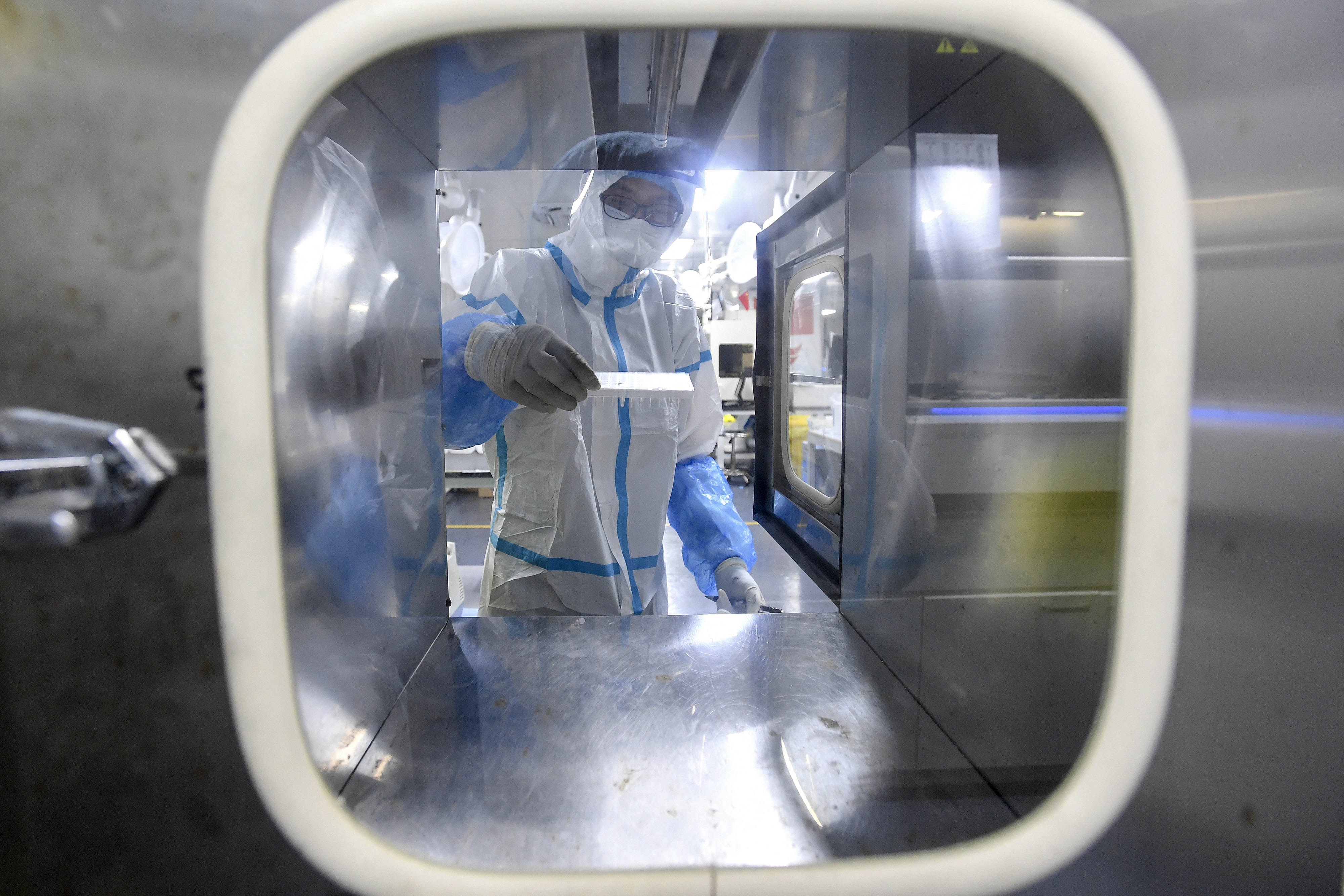The World Health Organization (WHO) has said that the variant of the virus that causes COVID-19 called NB.1.8.1 is causing more infections worldwide, as China’s health agency said it’s the dominant variant.
The new strain was named as a “variant under monitoring” by the UN health body last week, and the U.S. Centers for Disease Control (CDC) confirmed a small number of cases were circulating in the United States.
WHO Says New Variant Spreading
WHO said in an
update on May 28 that the variant is driving up cases in parts of the world and is currently spreading in Southeast Asia, the western Pacific regions, and the Mediterranean.
“The recent increases have been observed in four countries and areas to date: Cambodia, China, Hong Kong ... and Singapore,” the U.N. group said.
The variant LP.8.1 is currently the dominant version worldwide, according to WHO. But both LP.8.1. and NB.1.8.1 have not shown signs that they would cause an “increased public health risk” when compared with other circulating variants, the U.N. health body stated.
Reports From China
In a recent update, the Chinese CDC said that NB.1.8.1 makes up the
majority of cases in China, while some Chinese doctors have gone on record via state-run media outlets to say that one symptom that is being reported is a sharply painful sore throat.
The Chinese CDC has been criticized over the years for not being transparent with its case and death figures throughout the COVID-19 pandemic. The Trump administration and some U.S. intelligence officials have said that the virus that causes the disease appeared to have emerged from a top-level laboratory in Wuhan, China, in late 2019 before the Chinese Communist Party (CCP) attempted to cover it up and downplay its significance.
Some outside experts have questioned the actual death toll and case numbers reported by the regime since the pandemic’s start in early 2020.
Dr. Jonathan Liu, professor at the Canadian College of Traditional Chinese Medicine and director of the Kang Mei TCM Clinic, said that official data for March showed that seven people died from COVID-19 that month.
“With normal epidemic rates, such a low figure is implausible,” Liu told The Epoch Times. “Canada, with a sparse population and good sanitation, reported 1,915 COVID deaths from August last year to May this year—over 200 per month. How could China, with its dense population, have only seven deaths monthly?”
The Chinese CDC also “has not reported the rate of severe cases, hospitalization rate, or mortality rate,” according to Sean Lin, assistant professor at the Biomedical Science Department of Fei Tian College, former U.S. Army microbiologist, and Epoch Times contributor.
Other countries “cannot know the actual situation” in China because of the CCP’s attempts to downplay the true state of COVID-19 domestically, he said.
WHO’s recent update noted that new variant cases have increased in the western Pacific region, which includes China.
Other Governments Respond
Officials in South Korea said on May 30 that its government is closely monitoring COVID-19 cases in China and Hong Kong, while the country’s Central Disaster and Safety Countermeasures Headquarters conducted a meeting that morning on the situation.
“COVID-19 cases are increasing in some neighboring countries, including Hong Kong, China and Thailand, which is concerning,” Second Deputy Director General Lee Han-kyung of the Ministry of the Interior and Safety told JoongAng Daily. “People aged 65 and older, as well as residents of high-risk facilities, should get vaccinated now to prevent severe illness and death.”
The Korean Medical Association also said it has “concerns” because of large fluctuations in the daily weather temperatures and “increased population movement due to domestic and international travel.”
“There is considerable concern about a COVID-19 resurgence, and with more indoor activities likely due to the hot weather, the risk of respiratory infections spreading may increase,” the association told JoongAng Daily.
In India, Delhi Health Minister Pankaj Singh told the PTI news service on May 26 that there is no need to panic over the strain.
“We have advised hospitals to be ready with beds, oxygen, essential medicines, and equipment, just in case. This is a part of standard preparedness,” he said. “There is no need to worry. COVID caused by the new variant is similar to a normal viral illness. The patients who have come in so far are experiencing mild symptoms like fever, cough, and cold.”
This week, officials in Taiwan sent an alert about COVID-19 and stated that people in the country should wear a mask and wash their hands. Taiwanese officials earlier this month had reported a rise in cases.
CDC Says Case Numbers Are Low
U.S. officials appeared to downplay the significance of the new variant, suggesting that it’s not worse than any of the ones that are currently in circulation.
In a statement to The Epoch Times, a CDC spokesperson said that the health agency “is aware of reported cases of COVID-19 NB.1.8.1 in China and is in regular contact with international partners.”
“It has not met the threshold for inclusion in the COVID Data Tracker dashboard. We monitor all SARS-CoV-2 sequences, and if it increases in proportion, it will appear on the Data Tracker dashboard,” the spokesperson added, noting that fewer than 20 sequences of the variant have been found so far.









